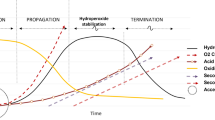Abstract
Zidovudine (AZT) and lamivudine (3TC) are drugs commonly used in the treatment of acquired immune deficiency syndrome; however, these drugs have low bioavailability and short biological half-life. These factors contribute to the emergence of various side effects and lack of patient adherence to treatment. Therefore, the study of drug delivery systems is of extreme interest. In this context, this study intends to develop hydroxypropylmethylcellulose films (HPMC) containing AZT and films containing 3TC, and assess the existence of drug/polymer interactions by means of thermal analysis techniques [differential scanning calorimetry (DSC) and thermogravimetry (TG)/derivative TG (DTG)], Fourier transform infrared (FTIR) spectroscopy, and X-ray diffraction (XRD), contributing to the optimization of antiretroviral therapy. The films produced showed drying uniformity and drug distribution. DSC curves indicated that these drugs may be in an amorphous form dispersed in the polymeric matrix. Thermal decomposition profiles obtained in the TG/DTG studies of films containing drugs showed similarities with the curves of their respective physical mixtures. The FTIR spectra showed the characteristic bands conservation of AZT and 3TC isolated in the films with drugs. The results indicate that these drugs did not undergo a process of degradation or chemical interaction with the polymer that would lead to the modification or alteration of their chemical structures. XRD studies confirmed that these drugs were homogenously dispersed in the polymeric matrix. These results also showed that there was no drug/polymer incompatibility in HPMC films.









Similar content being viewed by others
References
Sosnik A, Chiappetta DA, Carcaboso AM. Drug delivery systems in HIV pharmacotherapy: what has been done and the challenges standing ahead. J Control Release. 2009;138:2–15.
UNAIDS (Joint United Nations Programme on HIV/AIDS). Global report. UNAIDS report on the global AIDS epidemic. 2010. http://www.unaids.org. Accessed 10 June 2012.
Xie L, Zhao CH, Zhou T, Chen HF, Fan BT, Chen XH, Ma JZ, Li JY, Bao ZY, Lo Z, Yu D, Lee KH. Molecular modeling, design, synthesis, and biological evaluation of novel 3′,4′-dicamphanoyl-(+)-cis-khellactone (DCK) analogs as potent anti-HIV agents. Bioorg Med Chem. 2005;13:6435–49.
Pauwels R. Aspects of successful drug discovery and development. Antivir Res. 2006;71:77–89.
Ojewole E, Mackraj I, Naidoo P, Govender T. Exploring the use of novel drug delivery systems for antiretroviral drugs. Eur J Pharm Biopharm. 2008;70:697–710.
Broder S. The development of antiretroviral therapy and its impact on the HIV-1/AIDS pandemic. Antivir Res. 2010;85:1–18.
Suwanpidokkul N, Thongnopnua P, Umprayn K. Transdermal delivery of Zidovudine (AZT): the effects of vehicles, enhancers, and polymers membranes on permeation across cadaver pig skin. AAPS PharmaSciTech. 2004;5:01–8.
Pannchagnula R, Narishetty STK. Transdermal delivery of zidovudine: effect of terpenes and their mechanism of action. Effect of l-menthol and 1,8 cineole on phase behaviour and molecular organization of SC lipids and skin permeation of zidovudine. J Control Release. 2005;102:59–70.
Katlama C, Valantin MA, Matheron S, Coutellier A, Calvez V, Descamps D, Longuet C, Bonmarchand M, Tubiana R, De Sa M, Lancar R, Agut H, Brun-Vezinet F, Costagliola D. Efficacy and tolerability of stavudine plus lamivudine in treatment-naive and treatment experienced patients with HIV-1 infection. Ann Intern Med. 1998;129:525–31.
Merrill DP, Moonis M, Chou TC, Hirsch MS. Lamivudine or stavudine in two- and three-drug combinations against human immunodeficiency virus type 1 replication in vitro. J Infect Dis. 1996;173:355–64.
Soudeyns H. Anti-human immunodeficiency virus type 1 activity and in vitro toxicity of 2′-deoxy-3′-thiacytidine (BCH-189), a novel heterocyclic nucleoside analog. Antimicrob Agents Chemother. 1991;35:1386–90.
Benhamou YE. Efficacy of lamivudine on replication of hepatitis B virus in HIV-infected patients. Lancet. 1995;345:396–7.
Blaney SM. Pharmacokinetics of lamivudine and BCH-189 in plasma and cerebrospinal fluid of no human primates. Antimicrob Agents Chemother. 1995;39:2779–82.
Pannchagnula R, Narishetty STK. Transdermal delivery of zidovudine: effect of terpenes and their mechanism of action. J Control Release. 2004;95:367–79.
Melero A, Garrigues TM, Almudever P, Villodre AM, Lehr CM, Schafer U. Nortriptyline hydrochloride skin absorption: development of a transdermal patch. Eur J Pharm Biopharm. 2008;69:588–96.
Almeida EP, Costa AA, Serafini MR, Rossetti FC, Marchetti JM, Sarmento VHV, Nunes RS, Valerio MEG, Araújo AAS, Lira AAM. Preparation and characterization of chloroaluminum phthalocyanine-loaded solid lipid nanoparticles by thermal analysis and powder X-ray diffraction techniques. J Therm Anal Calorim. 2012;108:191–6.
Araújo AAS, Bezerra MS, Storpitis S, Matos JR. Determination of the melting temperature, heat fusion, and purity analysis of different samples of zidovudine (AZT) using DSC. Braz J Pharm Sci. 2010;46:37–43.
Neto HS, Novák C, Matos JR. Thermal analysis and compatibility studies of prednicarbate with excipients used in semi solid pharmaceutical form. J Therm Anal Calorim. 2009;97:367–74.
Lira AAM, Nanclares DMA, Federman Neto A, Marchetti JM. Drug:polymer interaction in the all-trans retinoic acid release from chitosan microparticles. J Therm Anal Calorim. 2007;87:899–903.
Nunes PS, Bezerra MS, Costa LP, Cardoso JC, Albuquerque RLC Jr, Rodrigues MO, Barin GB, Silva FA, Araújo AAS. Thermal characterization of usnic acid/collagen-based films. J Therm Anal Calorim. 2010;99:1011–4.
Santos AFO, Basílio ID, Souza FS, Medeiros AFD, Pinto MF, Santana DP, Macêdo RO. Application of thermal analysis in study of binary mixtures with metformin. J Therm Anal Calorim. 2008;93:361–4.
Bogdanova S, Sidzhakova D, Karaivanova V, Georieva S. Aspects of the interactions between indomethacin and nicotinamide in solid dispersions. Int J Pharm. 1996;163:1–10.
Verma RK, Garg S. Compatibility studies between isosorbide mononitrate and selected excipients used in the development of extended release formulations. J Pharm Biomed Anal. 2004;35:449–58.
Kou W, Cai C, Xu S, Wang H, Liu J, Yang D, Zhang T. In vitro and in vivo evaluation of novel immediate release carbamazepine tablets: complexation with hydroxypropyl-β-cyclodextrin in the presence of HPMC. Int J Pharm. 2011;409:75–80.
Ford JL. Thermal analysis of hydroxypropylmethylcellulose and methylcellulose: powders, gels and matrix tablets. Int J Pharm. 1999;179:209–28.
Kumbhar DD, Pokharkar VB. Physicochemical investigations on an engineered lipid–polymer hybrid nanoparticle containing a model hydrophilic active, zidovudine. Colloid Surf A. 2013;436:714–25.
Maru SM, Matas M, Kelly A, Paradkar A. Characterization of thermal and rheological properties of zidovudine, lamivudine and plasticizer blends with ethyl cellulose to assess their suitability for hot melt extrusion. Eur J Pharm Sci. 2011;44:471–8.
Araújo AAS, Cides LCS, Storpirtis S, Matos JR, Bruns RE. Effects of experimental conditions on the estimation of kinetic parameters of the thermal decomposition of AZT using factorial design. J Therm Anal Calorim. 2005;79:6187–92.
Singh AV, Nath LK. Evaluation of compatibility of tablet excipients and novel synthesized polymer with lamivudine. J Therm Anal Calorim. 2012;108:263–7.
Jozwiakowski MJ, Nguyen NT, Sisco JM, Spancake CW. Solubility behavior of lamivudine crystal forms in recrystallization solvents. J Pharm Sci. 1996;85:193–9.
Repka MA, Gutta K, Prodduturi S, Munjal M, Stodghill SP. Characterization of cellulosic hot-melt extruded films containing lidocaine. Eur J Pharm Biopharm. 2005;59:189–96.
Mu L, Feng SS. Vitamin E TPGS used as emulsifier in the solvent evaporation/extraction technique for fabrication of polymeric nanospheres for controlled release of paclitaxel (Taxol®). J Control Release. 2002;80:129–44.
Bazzo GC, Silva MAS. Thermal analysis study of captopril coated tablets by thermogravimetry (TG) and differential scanning calorimetry (DSC). Braz J Pharm Sci. 2005;41:315–22.
Ribeiro YA, Oliveira JDS, Leles MIG, Juiz SA, Ionashiro M. Thermal decomposition of some analgesic agents. J Therm Anal Calorim. 1996;46:1645–55.
Araújo AAS, Storpirtis S, Mercuri LP, Carvalho FMS, Filho MS, Matos JR. Thermal analysis of the antiretroviral zidovudine (AZT) and evaluation of the compatibility with excipients used in solid dosage forms. Int J Pharm. 2003;260:303–14.
Ramkumaar GR, Srinivasan S, Bhoopathy TJ, Gunasekaran S. Quantum chemical and experimental studies on polymorphism of anti-viral drug Lamivudine. Spectrochim Acta A. 2012;98:265–70.
Yin J, Luo K, Chen X, Khutoryanskiy VV. Miscibility studies of the blends of chitosan with some cellulose ethers. Carbohydr Polym. 2005;63:238–44.
Souza JS, Ferrão MF. Infrared spectroscopy applied to the drugs quality control. Part I: multivariate regression for the quantification of potassium diclofenac. Braz J Pharm Sci. 2006;42:437–45.
Sahool S, Chakrabortil CK, Mishra SC, Naikl S. Analytical characterization of a gelling biodegradable polymer. Drug Invent Today. 2011;3:78–82.
Li W, Wu J, Zhan P, Chang Y, Pannecouque C, Clercq E, Liu X. Synthesis, drug release and anti-HIV activity of a series of PEGylated zidovudine conjugates. Int J Biol Macromol. 2012;50:974–80.
Singh AV, Nath LK. Evaluation of Compatibility of Lamivudine with Tablet excipients and a novel synthesized polymer. J Mater Environ Sci. 2011;2:243–50.
Chandak AR, Verma PRP. Design and development of Hydroxypropyl Methylcellulose (HPMC) based polymeric films of methotrexate: physicochemical and pharmacokinetic evaluations. Yakugaku Zasshi. 2008;7:1057–66.
Acknowledgements
We are thankful to the Centro Nacional de Desenvolvimento Científico e Tecnológico—MCT/CNPq (National Council for Scientific and Technological Development) for the financial support; to the Laboratório Farmacêutico do Estado de Pernambuco—LAFEPE (Pharmaceutical Laboratory of the State of Pernambuco) for donating the drugs; and to the Centro de Tecnologias Estratégicas do Nordeste—CETENE (Center for Strategic Technologies of the Northeast) for the FTIR analysis.
Author information
Authors and Affiliations
Corresponding author
Rights and permissions
About this article
Cite this article
de O. Porfírio, L., Costa, A.A., Conceição, R.R. et al. Compatibility study of hydroxypropylmethylcellulose films containing zidovudine and lamivudine using thermal analysis and infrared spectroscopy. J Therm Anal Calorim 120, 817–828 (2015). https://doi.org/10.1007/s10973-014-3938-5
Received:
Accepted:
Published:
Issue Date:
DOI: https://doi.org/10.1007/s10973-014-3938-5




